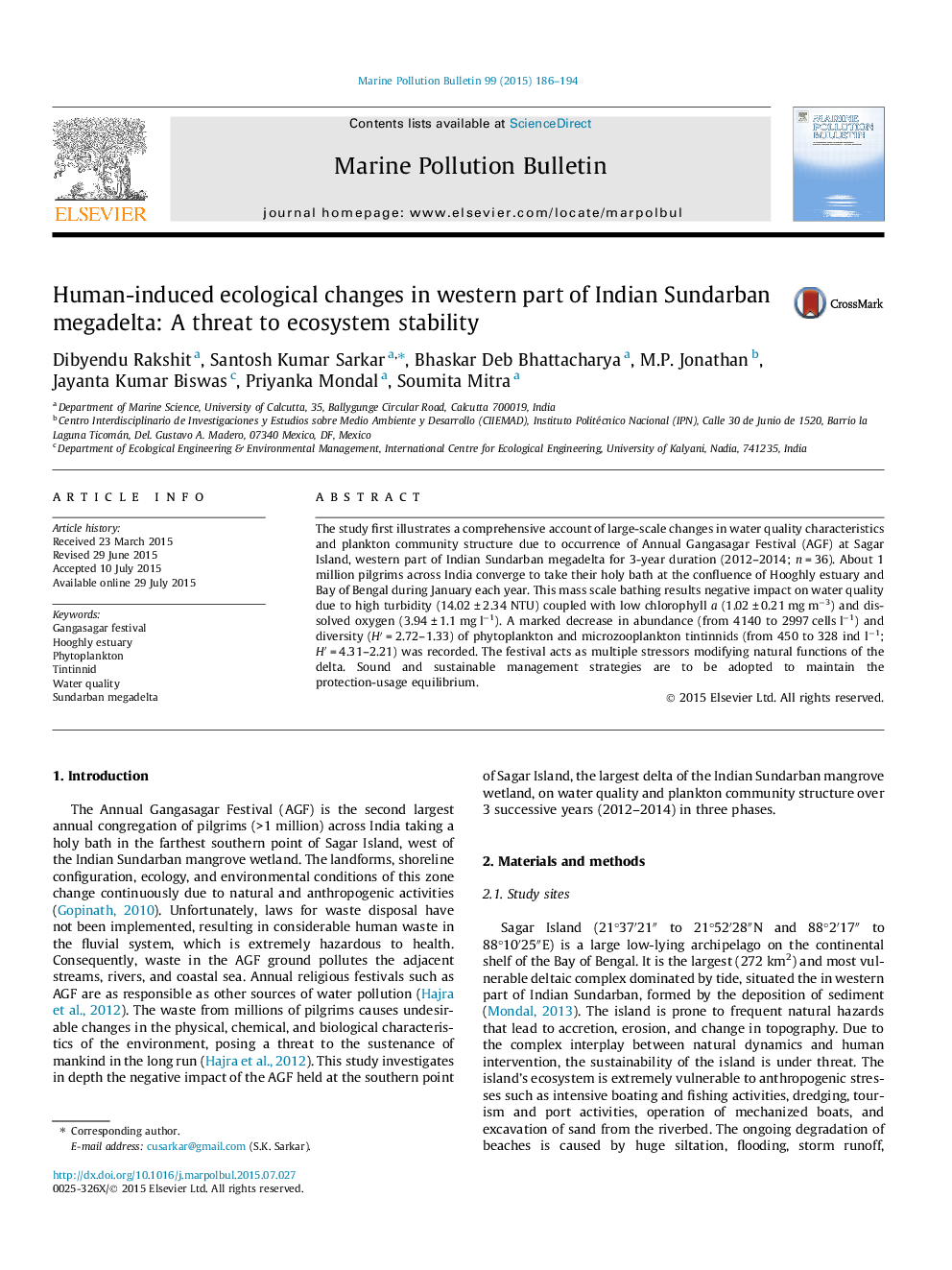| Article ID | Journal | Published Year | Pages | File Type |
|---|---|---|---|---|
| 4476664 | Marine Pollution Bulletin | 2015 | 9 Pages |
•Deterioration in plankton community and water quality has been recorded due to Annual Gangasagar Festival (AGF).•Water Quality Index (WQI) and species diversity index (H′) exhibited low values.•The human induced stresses resulting in loss of biodiversity and destruction of natural habitats.•Sound management strategies are to be implemented for the protection of coastal resources.
The study first illustrates a comprehensive account of large-scale changes in water quality characteristics and plankton community structure due to occurrence of Annual Gangasagar Festival (AGF) at Sagar Island, western part of Indian Sundarban megadelta for 3-year duration (2012–2014; n = 36). About 1 million pilgrims across India converge to take their holy bath at the confluence of Hooghly estuary and Bay of Bengal during January each year. This mass scale bathing results negative impact on water quality due to high turbidity (14.02 ± 2.34 NTU) coupled with low chlorophyll a (1.02 ± 0.21 mg m−3) and dissolved oxygen (3.94 ± 1.1 mg l−1). A marked decrease in abundance (from 4140 to 2997 cells l−1) and diversity (H′ = 2.72–1.33) of phytoplankton and microzooplankton tintinnids (from 450 to 328 ind l−1; H′ = 4.31–2.21) was recorded. The festival acts as multiple stressors modifying natural functions of the delta. Sound and sustainable management strategies are to be adopted to maintain the protection-usage equilibrium.
Graphical abstractFigure optionsDownload full-size imageDownload as PowerPoint slide
